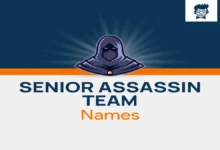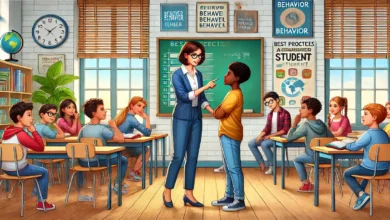Mashable’s Daily Deep Dive: What Today’s Wordle Reveals About Language Trends

Introduction
In today’s digital era, where quick, addictive games like it’s have captured the imaginations of millions, there’s more to glean from its widespread appeal than just entertainment. Mashable’s daily deep dive into there are not only brings excitement to our morning routines but also sheds light on evolving language trends. This article explores how it, as a linguistic phenomenon, reflects broader patterns in language use, engagement, and the cultural zeitgeist.
The Rise of Wordle: A Brief Overview

Wordle, the simple yet captivating word puzzle game, was created by software engineer Josh Wardle. Initially a private exercise for him and his partner, very quickly became a public sensation. Players have six attempts to guess a five-letter word, receiving feedback in the form of colored tiles that indicate when letters match or occupy the correct position.
What Wordle Tells Us About Language
Each day, it’s prompts its players to think about words under constraints that mirror real-world language processing in various ways. This section delves into the cognitive linguistics behind the, exploring how it trains users to think about word structure, phonetics, and semantics in everyday communication.
1. Vocabulary Building
Wordle encourages players to expand their vocabulary as they often encounter words they might not use daily. This daily puzzle helps highlight the dynamic nature of the English language, bringing old words back into circulation and introducing newer terms to a broad audience.
2. Language Learning
For non-native speakers, is offers a fun and engaging way to practice English. It provides a context for understanding how letters and sounds combine to form words, which is crucial for language learning and acquisition.
3. Spelling and Grammar
Regular engagement with can be improve spelling skills as players repeatedly work with different letter combinations and word structures. This aspect of the game also subtly influences grammatical perceptions by reinforcing the correct spelling of words often confused in everyday usage.
Analyzing Trends with Mashable’s Insights
Mashable’s analysis of Word trends provides a deeper understanding of how certain words gain popularity and what this tells us about language trends at large. By examining the most common guesses, successful strategies, and even the most frequently missed words, we can glean insights into the collective mind of the playing community.
1. Reflection of Social and Cultural Trends
Wordle’s daily solutions sometimes coincidentally align with real-world events, leading to spikes in specific word usages. For instance, words like “virus” saw increased guesses during health crises, reflecting a collective consciousness shaped by global events.
2. The Role of Social Media in Language Evolution
Social media platforms play a pivotal role in how is words spread and evolve. The viral nature of sharing the results promotes a communal learning environment where players share tips, tricks, and thoughts on daily words, influencing public discourse.
Case Studies: Wordle in Action
To illustrate the impact of the on language, several case studies of specific it’s games can be analyzed. These include instances where the solution words had significant relevance to ongoing news events or cultural discussions, demonstrating the game’s uncanny knack for capturing the zeitgeist.
The Educational Potential of Wordle
Educators have begun to recognize it’s potential as a teaching tool in classrooms. This section discusses how teachers use Wordle to enhance vocabulary lessons, spelling tests, and even as a tool for teaching English as a second language.
1. Vocabulary Lessons
Teachers incorporate Wordle into lessons to make learning new words more engaging. By challenging students to solve the puzzle, they stimulate critical thinking and problem-solving skills.
2. Integration in Language Courses
Language instructors use Wordle to reinforce lessons in phonetics, word formation, and syntax. Its puzzle-based learning approach helps students apply theoretical knowledge in a practical setting.
Conclusion
Wordle is more than just a game; it’s a reflection of our linguistic habits and the changing dynamics of language usage in the digital age. Through Mashable’s daily deep dive into the Wordle phenomena, we see not only patterns in word trends but also a snapshot of societal shifts in communication and culture. As we continue to engage with Wordle, we not only enjoy a daily mental workout but also participate in a larger, ongoing conversation about the words we choose and the reasons behind their selection.
This in-depth exploration of Wordle highlights its role not just in entertainment, but in educational and linguistic development, mirroring the very essence of language evolution in the 21st century.
FAQS
Here are five FAQs based on the content of the article “Mashable’s Daily Deep Dive: What Today’s Wordle Reveals About Language Trends”:
- What is Wordle and how do you play it? Wordle is a word puzzle game where players have six attempts to guess a five-letter word. Each guess provides feedback through colored tiles that indicate whether the letters are in the correct position or simply present in the word.
- How does Wordle influence vocabulary skills? Wordle helps players enhance their vocabulary by exposing them to words they might not use daily. This engagement not only refreshes less commonly used words but also introduces new vocabulary, aiding in language development.
- Can Wordle be beneficial for non-native English speakers? Yes, Wordle serves as an engaging tool for non-native speakers to practice English. It helps with understanding word structures, common phonetics, and semantics, which are essential for learning any language.
- How does Mashable analyze trends from Wordle? Mashable examines patterns such as the most common guesses, successful strategies, and frequently missed words from the daily games. This analysis helps understand broader language trends and how certain words resonate with the public during specific periods.
- In what ways are educators using Wordle in classrooms? Educators use Wordle to make learning engaging by incorporating it into vocabulary lessons and spelling tests. It is also used in language courses to reinforce lessons on phonetics and syntax, providing a practical application for theoretical knowledge.
These FAQs provide a quick overview of how Wordle is more than just a game, serving as a tool for language learning and reflection on societal linguistic trends.





